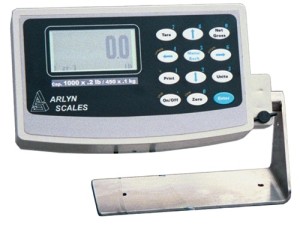 It may be safe to say that the economy cannot function without weighing scales. In ancient times, as in modern times, vendors would sell their goods by weight, and customers would pay by the weight also, often in the form of some precious metal like gold or silver. Simple balances were used to measure these weights. Today, the need for weighing scales has expanded well beyond the need to weigh goods for sale. In food processing plants, laboratories, silicon wafer factories, and hospitals, to just name a few, scales are needed for countless numbers of purposes. Therefore, industrial scales themselves have become much more complex feats of engineering. There are many different design choices to make when engineering a digital scale and the final decision always depends on what the scale will be used for.
It may be safe to say that the economy cannot function without weighing scales. In ancient times, as in modern times, vendors would sell their goods by weight, and customers would pay by the weight also, often in the form of some precious metal like gold or silver. Simple balances were used to measure these weights. Today, the need for weighing scales has expanded well beyond the need to weigh goods for sale. In food processing plants, laboratories, silicon wafer factories, and hospitals, to just name a few, scales are needed for countless numbers of purposes. Therefore, industrial scales themselves have become much more complex feats of engineering. There are many different design choices to make when engineering a digital scale and the final decision always depends on what the scale will be used for.
One design choice that must be considered is the body of the scale, including the size and profile. The size is often decided by the capacity of the industrial scale. Smaller scales include bench scales and parts counting scales for capacities up to about 150 pounds. Platform scales, with capacities of 1000 pounds start at about 2×2 and can be as large as 4×4. Floor scales, which have capacities of up to 20,000 pounds, may be as large as 7×9. The profile of an electronic scale is also a very important design feature. It is often very important for scales to have a low profile for easy loading and unloading of items. For example, liquid gas cylinders are often loaded onto industrial scales by wheeling them on a hand truck. It is very important for cylinder scales to have a low profile for ease of loading and unloading. Arlyn Scales has engineered a special pocket into the body of their cylinder scales which fits the load cell, the weight transducer device. This allows their cylinder scales to measure less than 1.5 high. Another important decision that must be made when purchasing an industrial scale is the resolution. High quality electronic scales will often have a resolution of 1 part in 5,000. A platform scale with a 500 pound capacity will have a resolution of 0.1 pounds. In many cases, this resolution is perfectly acceptable. However, in some cases like the preparation of medications or mixing of plastics ingredients, it is necessary to use a scale with much higher resolution. Surface Acoustic Wave (SAW) technology, which was developed and engineered by Arlyn Scales, allows for a resolution of 1 part in 100,000. In other words, a scale with a 500 pound capacity can have a resolution of 0.005 pounds. A scale would not be important if the user could not actually get a reading of the measured weight of the object. Therefore, several different output methods have been engineered into digital scales. The most common of these output methods is the digital indicator. This often consists of an LCD screen with room for text and sometimes graphics next to a 0-9 keypad. The buttons each often have multiple functions, and the screen displays either option menus or measurements. Today, the newest technology in scale to human interaction is the color touch panel. Bright color screens are readable in almost any environment, and buttons appear on the panel only when needed, getting rid of any confusion that occurs when buttons have more than one purpose. It may be necessary for a scale to communicate with a computer or with other equipment rather than with humans. For example, when mixing paint ingredients, it is important for a scale to shut off a feeding valve when a certain amount of paint has been released into the mixer. Industrial scales can now be constructed with USB output or can even been hooked up into a Local Access or wireless network in order to help communicate with other machinery or simply store measurement data. Of course, there is no end in sight to the continued engineering of digital scales, and in the future what we think of as an industrial scale today may look completely different than we imagine. In the meantime, companies such as Arlyn Scales specialize in custom engineering scales for many different needs. When a customer requires an electronic scale to perform a very specific task, such as dispense a number of different plastic ingredients into a blender or calculate the flow rate of chemicals, these companies can engineer and build scales to these specifications.

